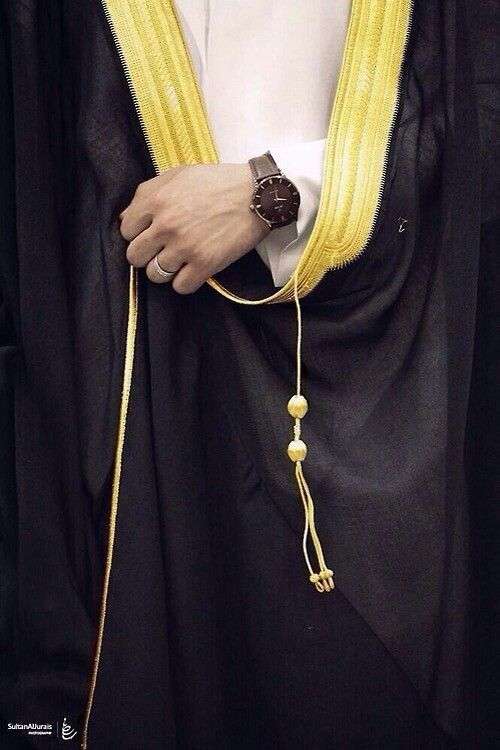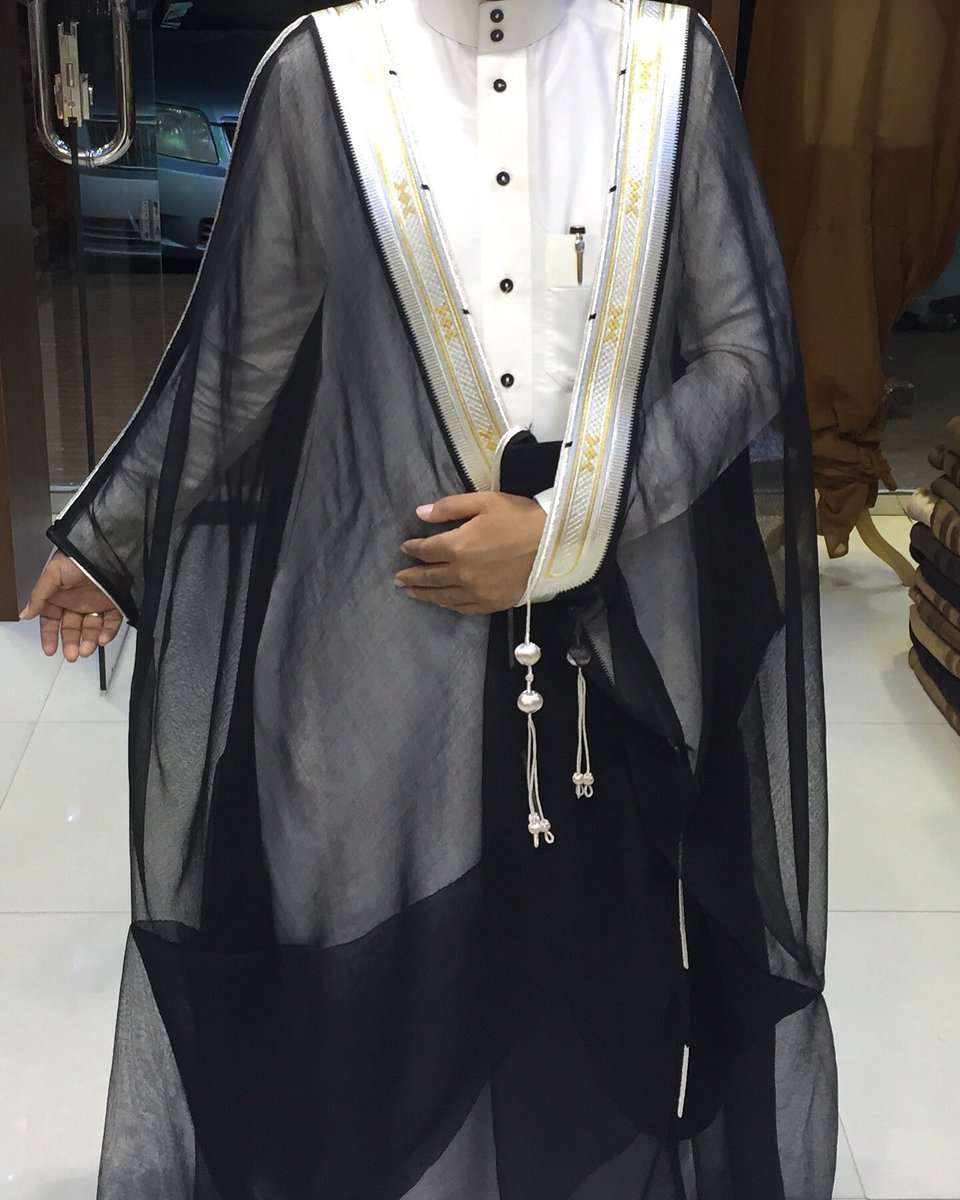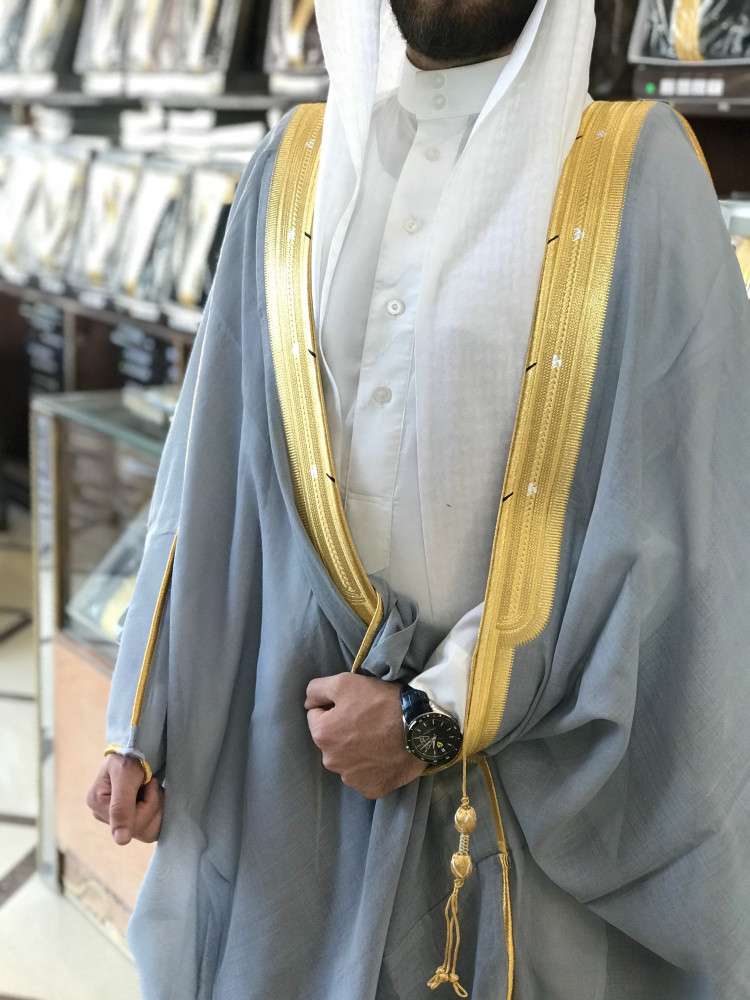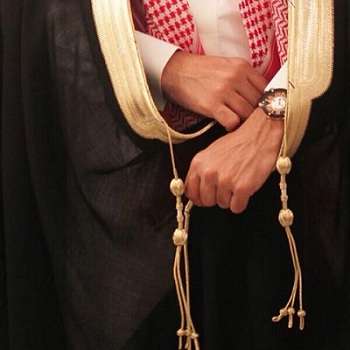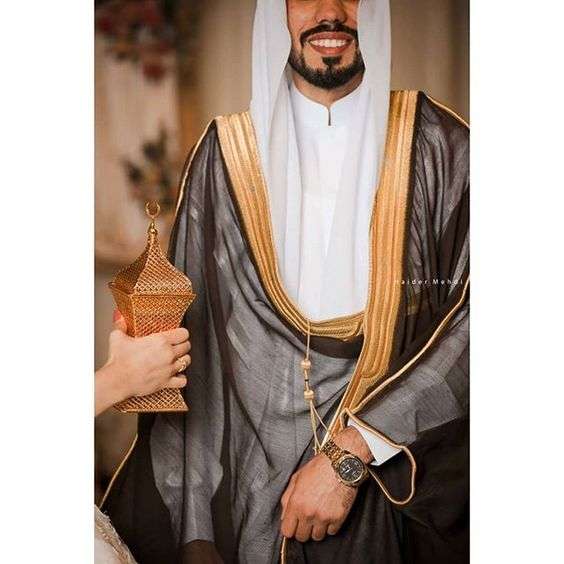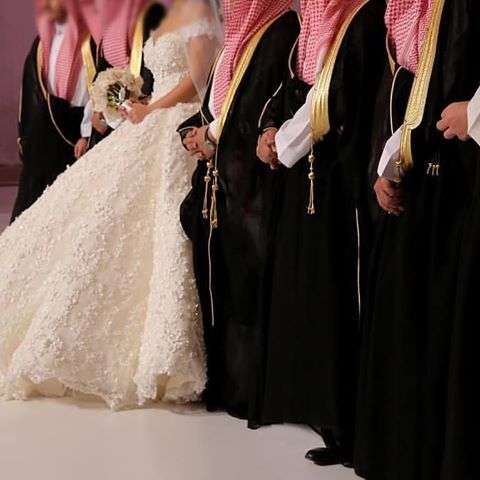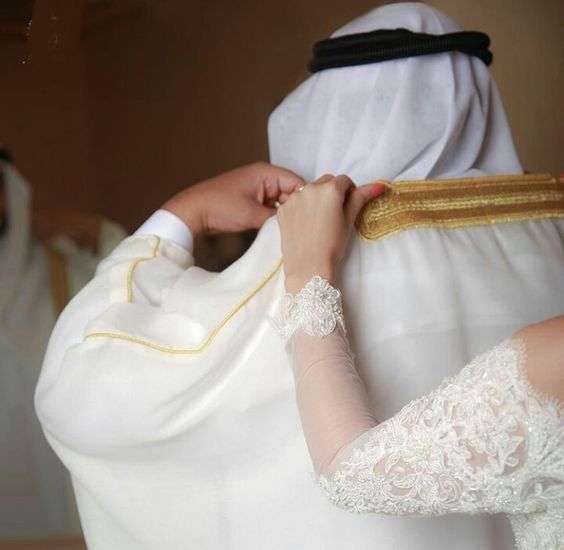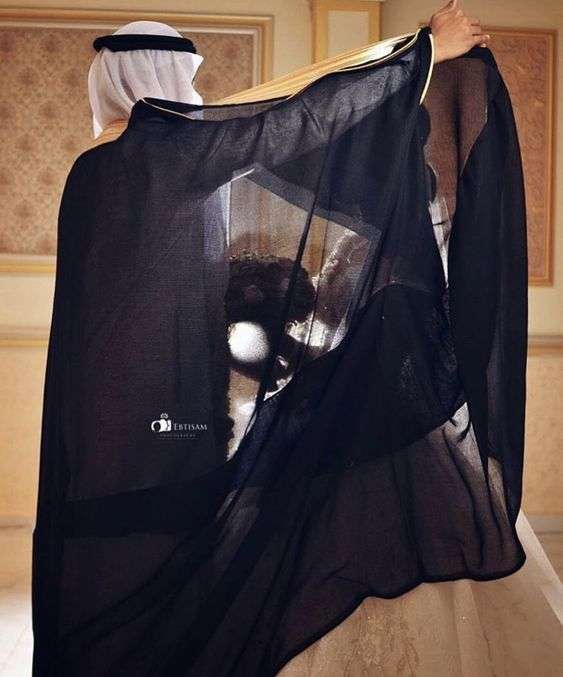Everything You Need to Know About The Groom's Bisht
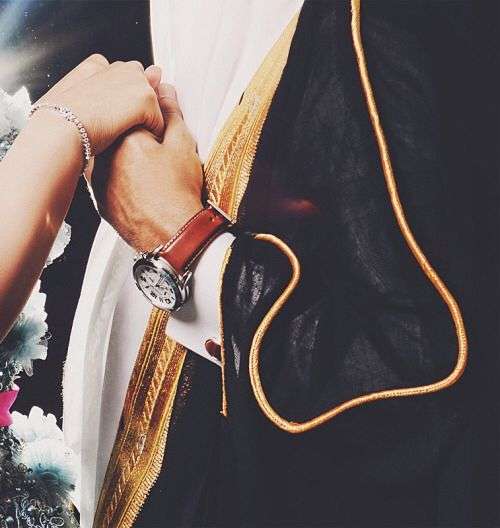
The bisht is an old tradition that is still preserved by many in the Gulf region, and despite the new fashion trends these days, the bisht is an eternal symbol of elegance and a sign of social prestige. So if you want to wear a bisht on your wedding day, there are some things you should know.
Visit our groom's section which offers many helpful tips and ideas for you to look your best on your wedding day.
But before we give you some ideas on how to wear your bisht, let's get to know more about this elegant tradition, a bisht is like an abaya but for men, and is worn on different occasions and is of great importance to men in the GCC, especially in Saudi Arabia.
When worn right the bisht should cover the shoulders, and reach to the feet, instead of sleeves the bisht has two openings for the arms, the bisht is always open at the front, and it usually has embroidery on the sides and around the neck area, and doesn't have any buttons.
The common way to wear a bisht is to insert the hands inside the arm openings, but some countries have different ways of wearing it, in Saudi Arabia, for example, the right hand goes inside, and the left hand stays outside the bisht, so that the person can grasp his side, and the right-hand remains free to greet others. In Kuwait, they take both hands out of the bisht, and in the Emirates and Bahrain, they enter both hands inside.
There is a traditional way to wear the groom's bisht, by placing it on the shoulders and leaving it open to reach down to the feet, there is also the ghutra worn by men on their heads, and it should drop from all sides to complete the entire look.
The bisht is worn on different occasions, especially at weddings. They are usually black with different embroideries known as the dakkat or zeri, and they differ from one region to the other.
Take a look at different ways to wear the groom's bisht.
A Luxurious Grand Wedding in Kuwait
In Kuwait and across the Gulf region, the bisht is a cherished part of wedding customs, reflecting the groom’s refined style and cultural heritage. Whether in classic black, beige, or rich earthy tones, the bisht enhances the groom’s presence, making him stand out with an aura of sophistication on his special day.
See more: A One-of-a-Kind Grand Wedding in Kuwait
